The Mental Health Issue








Anxiety Isolation Addiction Sleep 21 23 26 30 FALL 2020 WINTER 2021
800-273-8255
800-273-8255
800-273-8255
800-273-8255
800-273-8255
The phone number for the National Suicide Prevention Lifeline is 800-273-8255, available 24/7 for free and confidential support.
800-273-8255
Know that you are loved. You are important. And you are not alone.
800-273-8255
800-273-8255
800-273-8255

09 Calm app review 10 Dancing it out 08 Zoom fatigue 06 Virtual therapy 16 Living a double life 20 Therapy resources 21 Anxiety 14 Beyond a diagnosis 19 Somos Familia Valle 23 Isolation 34 Letter from the editor 28 Video games 30 Sleep deprivation 26 Addiction studies 33 Bob Scheibel obituary
Dyeing my hair and writing bad poetry

Hey, Bull staff!
Dancing, rock climbing and connecting with nature
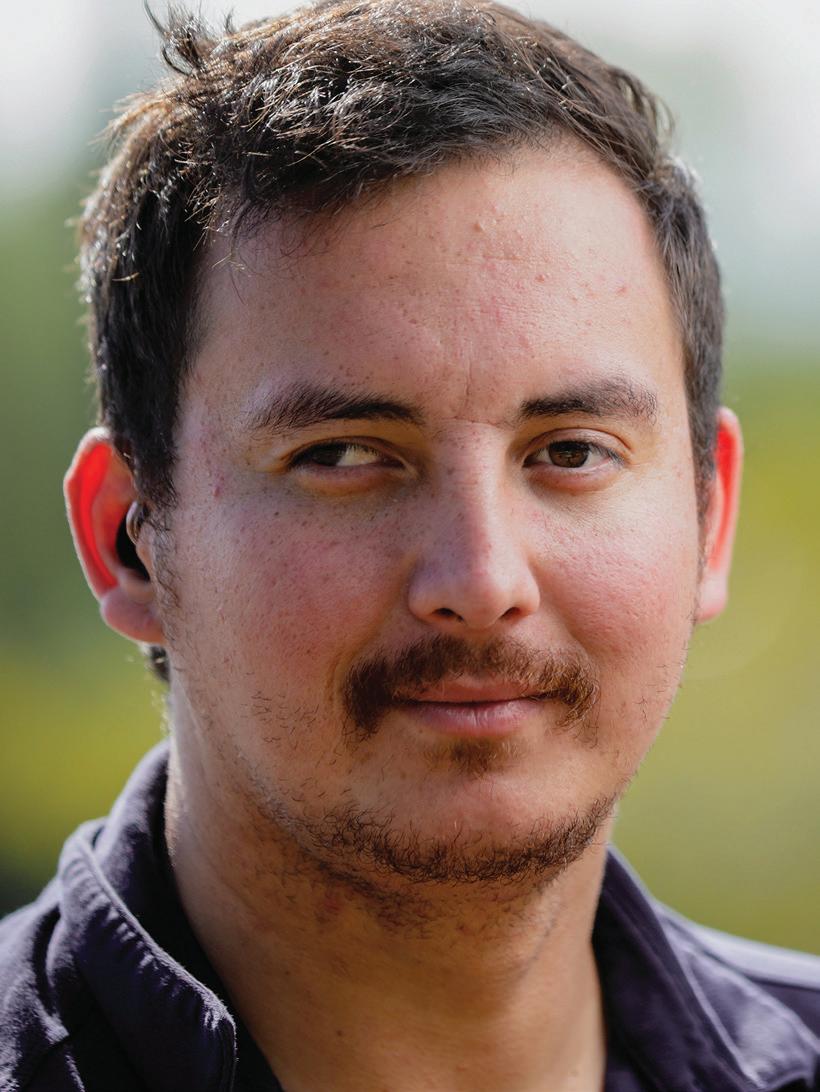
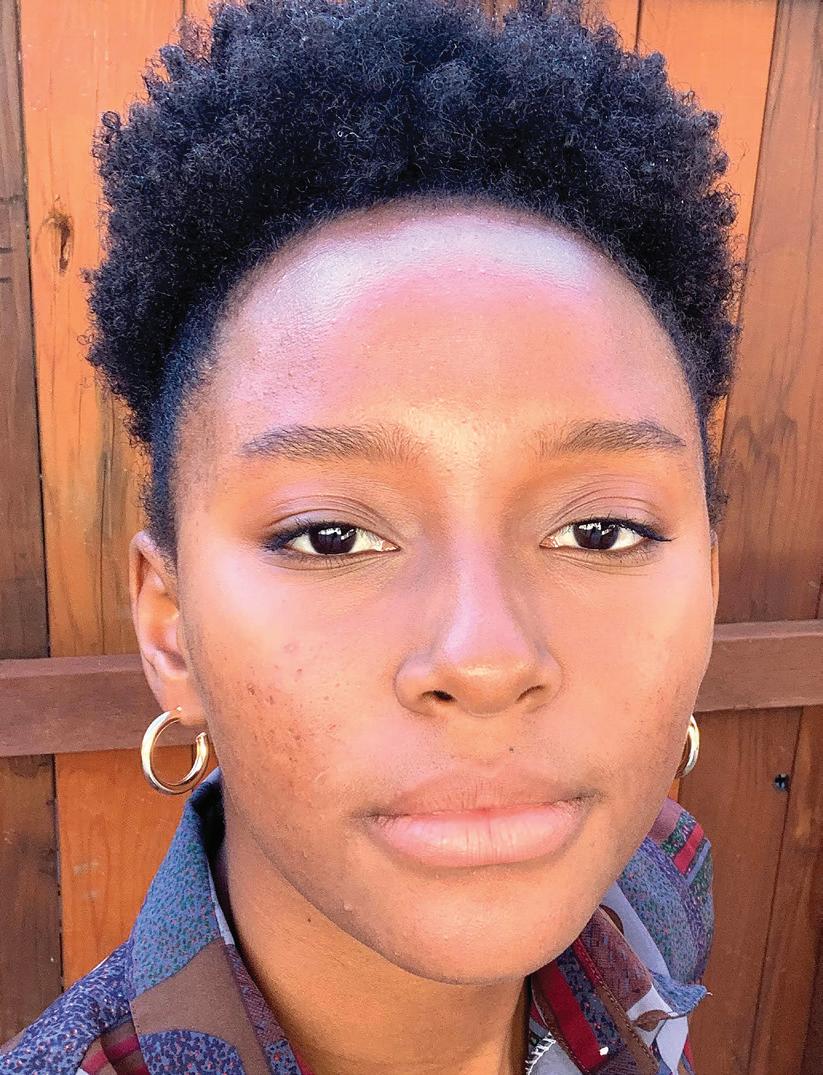


Journaling, crying and eating absolute trash
Listening to some classic oldies
Peter Villafane Editor-in-Chief
Benjamin Hanson Photographer
Playing with my dog, playing my guitar or cruising down the PCH
Joey Farriola Reporter
music such as KISS and Mötley Crüe
Katya Castillo Photo Editor
Kamryn Bouyett Reporter
How do you destress?

Watching horror movies and reading fiction novels
Taking a bath and rewatching “New Girl”
Listening to music or watching football
Writing and playing basketball

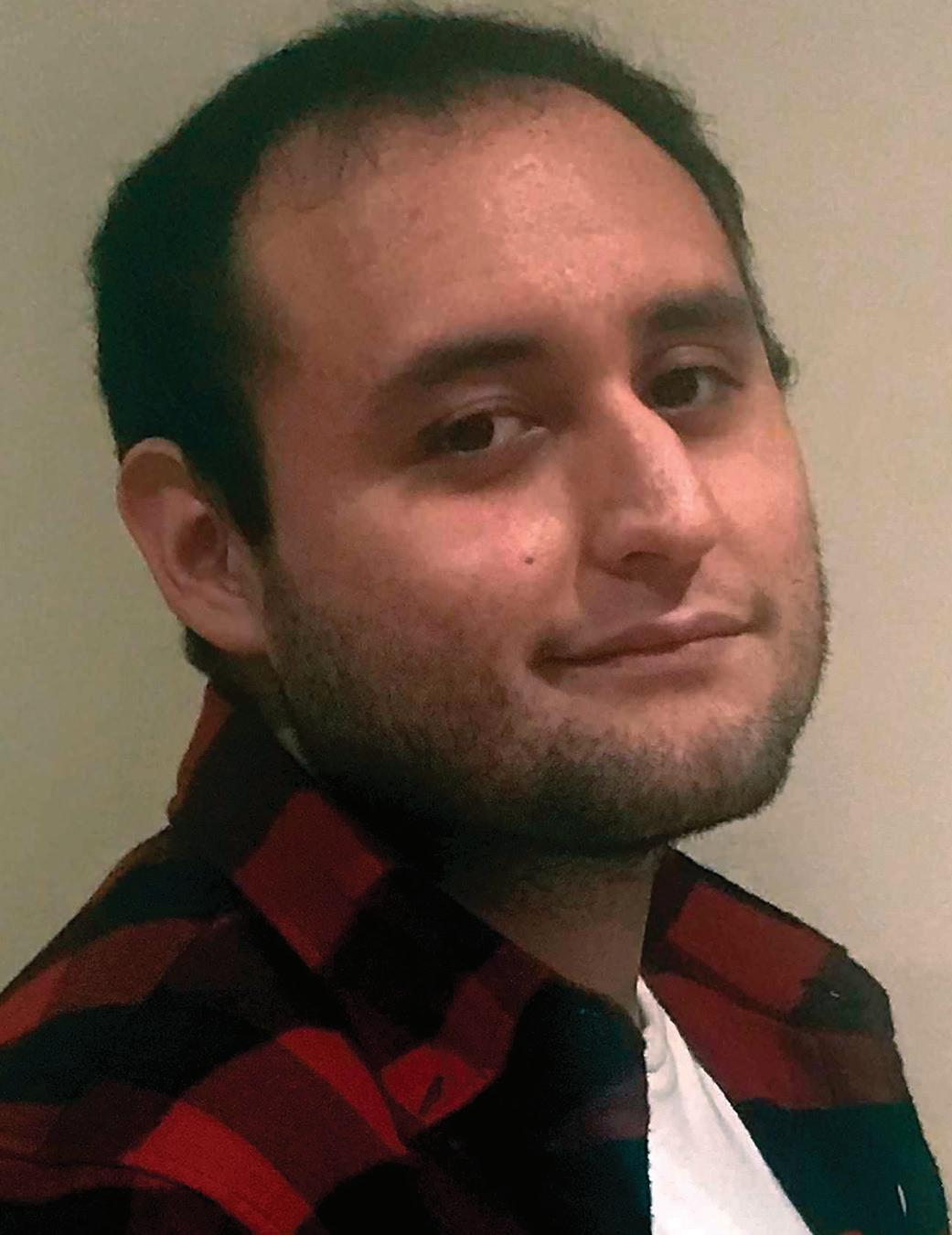
Taking one conscious breath and trying to remain in the moment


Taking photos
 Elizabeth Dowell Reporter
Paige Chestnut Reporter
Jeff Favre Adviser
Jill Connelly Adviser
Luis Mendoza Reporter
Ariel Gil Reporter
Elizabeth Dowell Reporter
Paige Chestnut Reporter
Jeff Favre Adviser
Jill Connelly Adviser
Luis Mendoza Reporter
Ariel Gil Reporter
patients adjust to
From one side of a screen, a young woman adjusts her glasses while getting a glass of water and prepares to sit at her desk for an hour. She logs on to her website, checking her virtual waiting room, ready to pluck her client into their session. Once they see each other, they begin to speak.

Therapist Therese Mascardo has been treating patients for more than a decade, partly from her office in Los Angeles, but usually from behind her computer screen.
“The quarantine experience can allow for more self-reflection and more selfawareness but not always,” Mascardo said. “Other times clients become consumed with keeping their lives going and caring for their kids alongside all of the responsibilities they have.”
Being alone, especially during the pandemic, can be extremely tough on the mind and the body, according to Mascardo. It’s hard to get help when people can barely leave their homes. This is why, she said, reaching out through online sources has been on the rise since the quarantine began.
“It’s better for my clients because of increased accessibility,” Mascardo said. “My clients can call me from their bed, their car or their office. It makes it a lot easier for them to go to therapy.”
But some patients were hesitant to make the switch. Some younger clients are more open to the idea of attending therapy online, while some older ones are not as comfortable with it because they aren’t familiar with technology.
Therapist Julie Kokesch has been primarily online since the beginning of 2020. She plans on switching to online therapy permanently.
“In the beginning, some of my existing patients quit therapy immediately due to the fear of their jobs being taken away and their unfamiliarity with online therapy,” Kokesch said. “Some patients were actually surprised with themselves on how much they’re opened up over online sessions in comparison to in person ones.”
Kokesch said patients adapted to online therapy and found themselves enjoying it more.
For some who have been accessing therapy in person before the quarantine, moving to online treatment has had its ups and downs.
Daniel Matekel has been going to therapy for more than two years and made the switch from traditional sessions to online when he began going to University of California, San Diego. Despite missing the comfort of a safe space, he is enjoying his online sessions from his bedroom as much as the doctor’s office.
“The way my therapist sets up her office is very cozy and very welcoming,” Matekel said. “It definitely puts me in a better mood than doing sessions in my room because I’m always working in my room doing school stuff.”
Matekel, who struggled with technological issues when he first started attending therapy virtually, said the separation allows him to focus more on himself and furthering his progress.
“Sometimes during sessions she would want me to close my eyes and visualize something, which can be uncomfortable for me because I know someone is just sitting there staring at me while doing so,” Matekel said.
Matekel said when he began the transition to online therapy, it was hard for him to find comfort attending sessions while having roommates.
“If my roommate and I weren’t on good terms, sometimes I would go out to my balcony and stand in the heat,” Matekel said.
A benefit of attending therapy sessions online, according to Macsardo, is not having to commute to each session. She said that some days her Los Angeles commute would take at least four hours.
“Switching to online therapy has saved me time, money and energy,” Mascardo said. “It’s allowed me to travel the world. I have been a full-time traveler since 2018.”
She never takes time off for vacation. As long as she has an internet connection, she can make online therapy work. By making more time for herself, she has made more time for her patients.
A therapist’s office tends to serve as most patients’ safe space. When COVID-19 struck, that safe space was taken away from many people, including Ashley Taylor.
“When doing online therapy you don’t have a guaranteed space to do it,” Taylor said. “When you’re in person, you’re in an office where no one can hear you and I can speak freely.”
Taylor began doing virtual therapy when quarantine began, but she has been going to therapy since late 2018. She found herself enjoying online therapy, although it doesn’t fill the void of a physical presence.
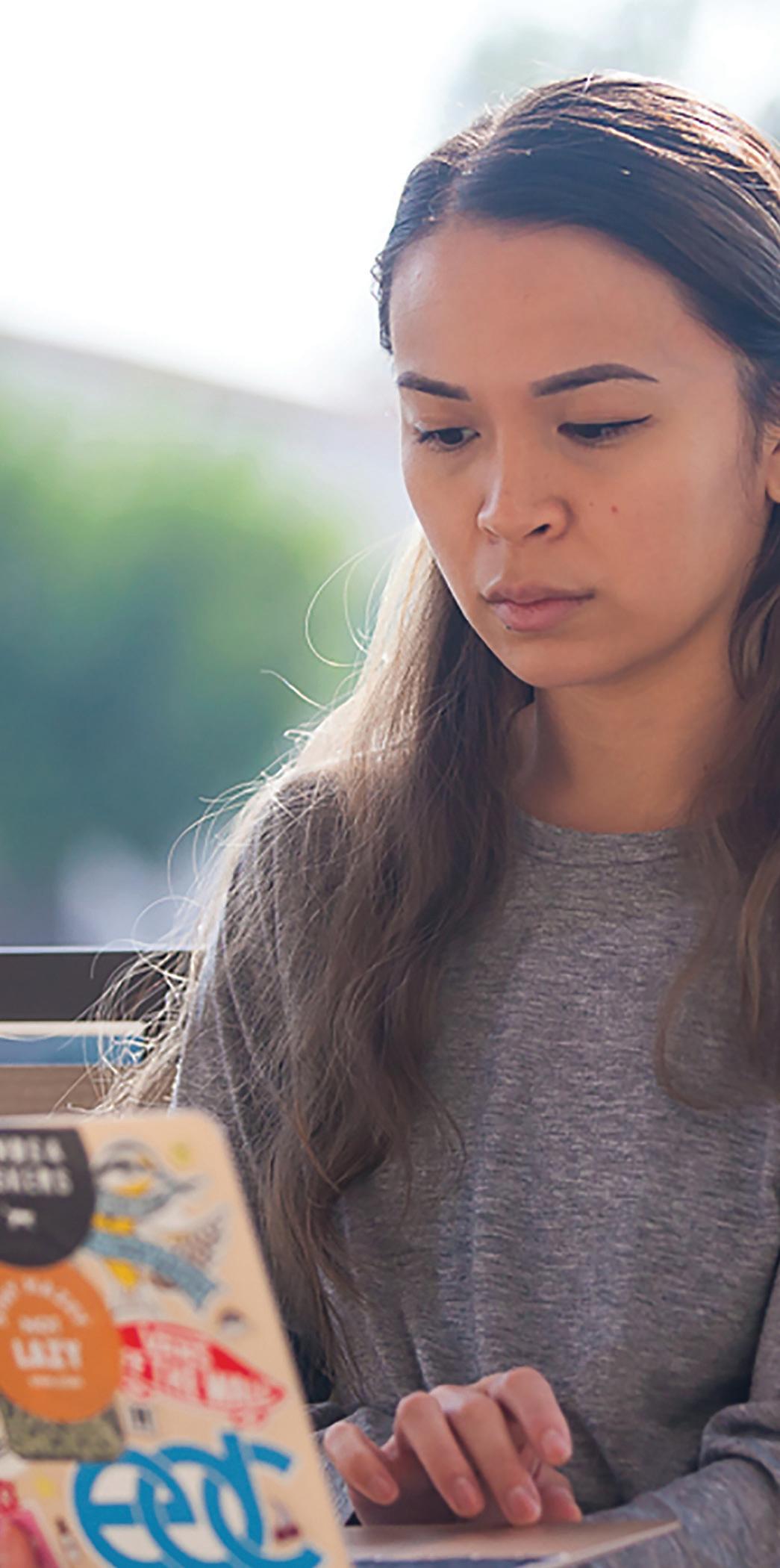
“It still does its job,” Taylor said. “Therapy is somewhere I go to vent, so it still serves its purpose.”
Psychology professor Allen Glass has taught more than nine different psychology courses at Pierce and a variety of institutions. He said that online therapy has its benefits, but he still feels that therapy is something that must be done in person.
“The great benefit of it is that it’s more accessible,” Glass said. “It’s easier to call a therapist rather than taking a bus or a train or a bicycle to get to where the patient has to go.”
Are you experiencing ZOOM FATIGUE?
Here are some tips that can help relieve blue screen burnout.
CALL INTO THE ZOOM
Reduce the time you spend staring at a blue screen by joining the meeting using your cellphone. Simply listen to the meeting and treat it like a phone call.
USE SPEAKER VIEW

Paying attention to everyone’s videos in Gallery View may be overstimulating. Focus on the person talking in Speaker View to avoid distractions and the feeling that you’re in multiple people’s homes.
PRACTICE THE 20 MINUTE RULE
To give your eyes a break from screen time, take a break every 20 minutes and look at something 20 feet away for 20 seconds. This allows your eyes to get moisture and prevent strain.
AVOID MULTITASKING
While it’s tempting to open a new tab and do other work while you’re in a meeting, the distraction may hinder your ability to do either task well.
Harvard Business Review
8 thebullmag.com
:(
Source:
App review: Calm
Story by Elizabeth Dowell
Sitting in a room all alone except for thoughts and feelings, it all comes rushing in. A rush of emotional anxiety comes, and getting it out seems impossible.
For those who experience this, the solution to the problem might lie in the palm of their hand: their cell phone. It is an electronic buddy and lifeline.
Cell phones are used for more than just calls and text messages. From keeping up with the latest news and social media trends to accessing personal bank accounts and doing school assignments, it’s an electronic folder of people’s lives.
Why not use it to find peace and clarity?
The Calm app, available for free, seeks to help users manage their mental health.
The app’s icon is a bright blue color with the word “calm” written in cursive, an enticing reason to open the app. Once opened, users are brought to a welcome page. At the top of the home page is a beautiful hillside mountain view with a blue sky. This image helps bring a peaceful vision of being in nature. The background image can be customized with any image the user wants. Depending on the time of day, there will be a good morning, good afternoon or good evening message with a smile emoji. This is a fun feature that makes the app more personal to use.
Athe the bottom of the app there are five different icons. These include For you, which puts a user’s personal favorite meditation categories into one personalized section, Sleep, which is intended to help users fall asleep, Meditate, Music and Search.
Each section has different meditations and music for users to find the perfect meditation based on their mood or need.
The app offers a wide variety of meditations, including daily calm, sleep, anxiety, beginners, stress, work, self-care, inner peace, focus, relationships, personal growth and even meditations for children. This app covers many areas of life and makes it easy to find something to help get through one’s day or night.
For example, How to Meditate narrated by Jeff Warren, is a great mediation intro for any beginner. Warren takes listeners through a simple 30-day program that teaches meditation skills and knowledge.
The first meditation
“The Big Idea” is free. The rest of the program is locked behind a paywall.
While listening to The Big Idea, Warren walks listeners through a simple meditation. Water flows in the background as the meditation plays, which helps relax the mind and body. It brought a sense of peace and allowed the mind to flow, aligning the mind, body and soul.
It helped wash away anxiety, which Warren said is what meditation does. He said it is the practice of making space.

Before listening to meditations my mind and emotions were all over the place. I didn’t know how to ease my anxiety. After listening to this meditation it helped me become more aware of my emotions and thoughts.
The meditation teaches how to be present in the moment and just be still.
Meditation is taking everything in at that moment in time and creating a deeper connection with the mind. Now, I practice meditation daily because it’s helped me become more balanced and have a healthier mindset.
Another good feature is the ability to scroll down through the app from the homepage. Scrolling through the app you can go into quick and easy, mental fitness, sleep stories, recent sparks and daily calms. They are easy to find.
The meditations have different time limits, from five minutes or listen to an hour. Many natural sounds are also included into the meditation, which is nice and makes one feel physically surrounded by that environment. Good ones include the beach and rain themed meditations.
However, most of the content is locked until you pay for the premium version of the app, which is not ideal. The free version only gives a small sample of what the app can provide. The premium fee for the app is $69.99 per year, with a cancelation anytime option.
The app does offer a 7-day free trial, which is a good option for users to see whether or not they enjoy it before paying for the premium version.
Overall, the app is enjoyable and helpful. If using the app daily, it is worth paying for the premium version. It is very easy to navigate and use.
This app is just like its name: very calm, cool and collected. It provides a boost for mental, physical, emotional and spiritual health and wellbeing.
It is worth it to keep Calm in one’s palm.
Calm is available on the iTunes App Store and on Google Play. It is also available on web browsers at calm.com.

Mental Health 9
Photo illustration by Katya Castillo
The home page of the Calm app is a serene mountain view with a custom greeting.

10 thebullmag.com
Left: Kellie McKuen, who has been attending therapeutic movement classes for two decades, jumps in the air as she gets into “dance mode.”
Photo by Katya Castillo.
Right: Vicki Alvarez, co-founder and program director of Let’s Dance It Out, performs a dance move. Photo by Katya Castillo.
Dancing through life
exhale.
Inhale, exhale.
Inhale, exhale.
The dancers then bring their clasped hands from the top of their head down to their heart.
With that, as it has for years, the class ends.
Kellie McKuen said when she first did this move, it felt magical and ancient.

“It feels like we’re still all joined even though some of us aren’t there,” McKuen said. “The ritual had been passed down to us and we learned it, and now we pass it on to others.”
McKuen attends classes at Let’s Dance It Out, a dance studio offering therapeutic movement classes that mainly works with people with special needs.
McKuen, 58, has been going to Let’s Dance It Out for 20 years. She said attending the classes has helped her with one of her biggest challenges—walking through a crowd of people.
“I’m able to choreograph my way through a huge crowd,” McKuen said. “I’ve even had agoraphobia and I’ve managed to work my way through it. It’s not so much that I’ve overcome it. I’ve learned how to manage it by looking at it in a dance therapy sort of way. When I’m in dance mode, it’s a lot easier to more gracefully find my way to maneuver through it.”
McKuen said being in dance mode fills her with positive energy and joy.
“I never feel alone,” McKuen said. “I always feel like my dance family is around. So it’s an awesome feeling.”
Before she started taking the classes, McKuen said she was introverted and shy and had a difficult time connecting with others. She’s most grateful for the interpersonal skills that Let’s Dance It Out has taught her.
“Just in the last decade I’ve learned how to make and sustain very positive, loving and very valuable friendships,” McKuen said. “I didn’t really understand how to talk. I didn’t really see the purpose in it. And now that I actually can, I’m so grateful and happy with my life every day with not having to enjoy my life all alone. I have others that I’ve known for many, many, many years sharing all these wonderful experiences with.”
The classes have grown her self-esteem and helped her to embrace being on the autism spectrum.
“I’ve now learned to embrace having an autistic spectrum disorder,” McKuen said. “I don’t think of it as a disorder. I feel that it’s a positive difference and I would like people to know that I think it’s beautiful, the differences we have.”
Let’s Dance It Out was originally called Dance for All. Dance movement therapist Kathy Cass co-wrote the curriculum for the program.
She said the program is transformative and recalled a time when she worked in a psychiatric hospital and witnessed a change in a patient. The man would come to every class session disheveled and depressed and stay in the corner of the room.
But by the end of his hospital stay, he was helping lead the class. He would initiate movement and encourage group members to do the same.
Mental Health 11
“
I never feel alone. I always feel like my dance family is around.
Kellie McKuen Dancer
L ocal program teaches therapeutic movement
Story by Peter Villafane
Photos by Katya Castillo and Peter Villafane
Inhale,
“He had this twinkle behind his eye and he was able to move and stretch and kind of play with others in the group,” Cass said. “He was little by little embodying being a leader and being a supporter of others, which was so inspiring to see.”
Cass said in addition to the internal effects on the dancers, these classes also impact people’s interactions with others.
“It’s not just what happens in the room,” Cass said. “It’s how that glow, that joy, that shift affects their relationships as well. So there’s this lovely ripple, the butterfly effect.”
McKuen has experienced this shift and has been able to create “a beautiful alliance of friendships” with people outside of the dance studio.
“I’m still awestruck by it,” McKuen said. “I really didn’t understand how much I was missing out not having it until I had it. I’m so grateful to all my friends.”
McKuen said the classes, such as those that focus on empathy, would be beneficial not only for people with developmental issues.
Vicki Alvarez, co-creator and program director of Let’s Dance It Out and a postgraduate dance movement therapist, noticed progress in McKuen during a class about empathy.


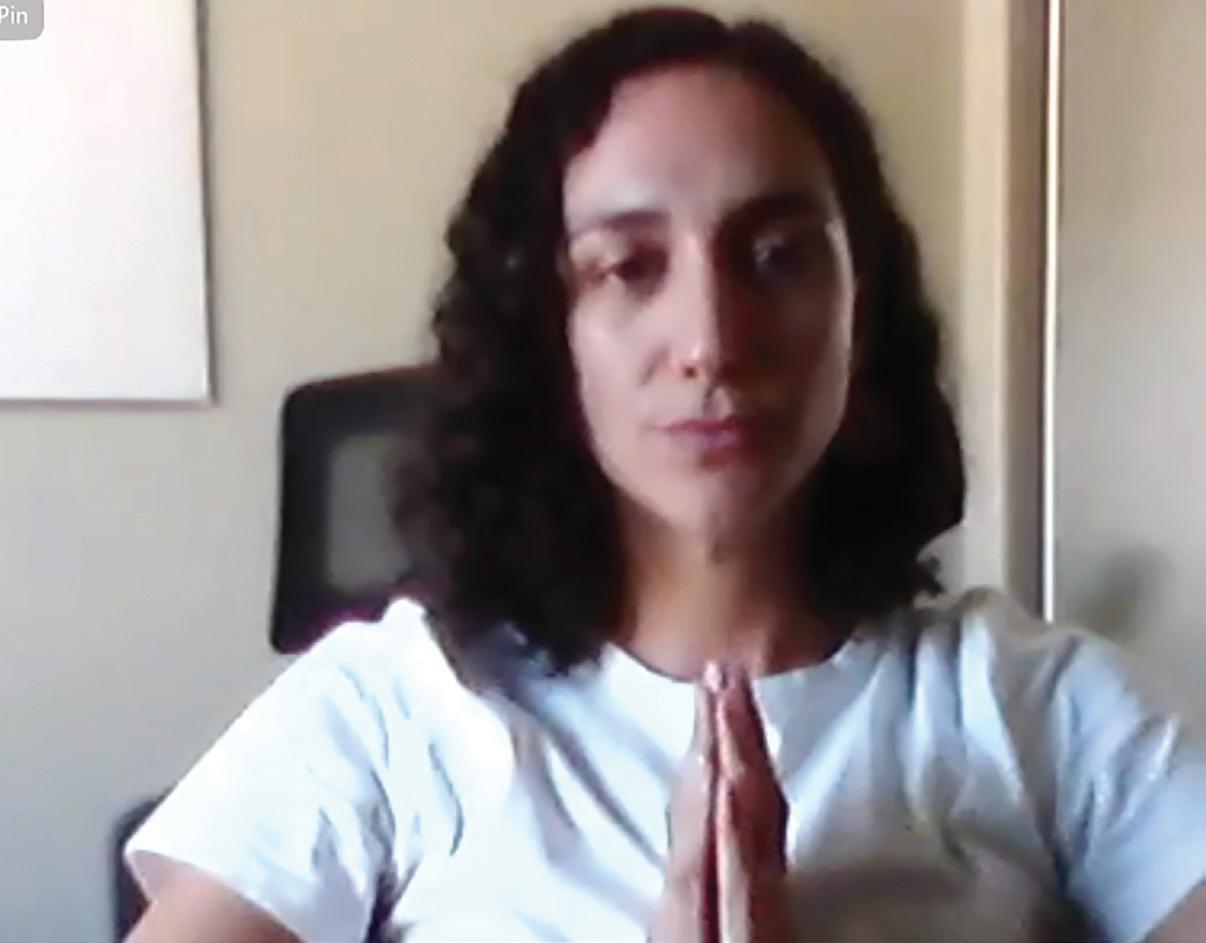
“She joined the meeting, and she got really upset,” Alvarez said. “And she was able to self regulate on her own and started to realize, ‘No it’s not just my emotions involved. There’s other people around me, and I’ll have to be aware of that.’ And she brought that in with us during a staff meeting one time and was just telling us, ‘I’ve learned so much in this curriculum and it’s really helped me in my own life.’ And that was just so heartwarming. I got tearful when she told us because it was such a beautiful moment.”
Alvarez runs the program with Clorinda Rossi-Shewan, lead facilitator at Let’s Dance It Out and a licensed psychotherapist. Both with backgrounds in professional dance, they have been running the program since 2016 and were the ones who rebranded Dance for All as Let’s Dance It Out.
According to Rossi-Shewan, a typical session begins as such:
After the dancers greet each other as they come in, a roll call is taken and the dancers answer the question of the day—”what’s your favorite color?” or “what did you do last weekend?” for example. Then, they do a warmup and instructors introduce the theme of the day. Dancers will take turns expressing the theme. Finally, there is a cool down with relaxation and a goodbye dance from each dancer.
Rossi-Shewan and Alvarez sometimes base the themes of the classes on what’s going on in their lives.
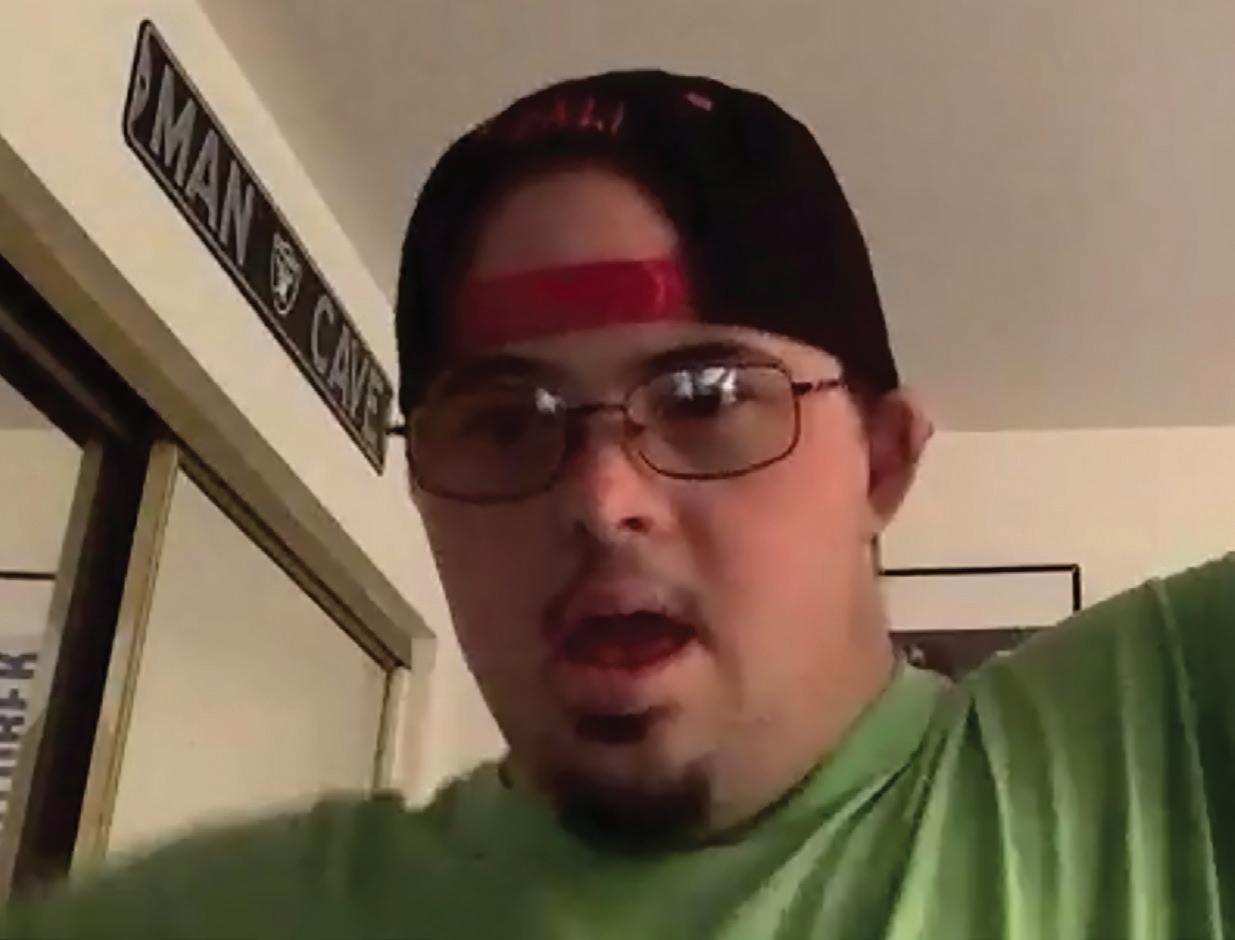
12 thebullmag.com
“One of the classes I created together with Vicki was about self care because during that time in my life, I felt like there wasn’t a lot of that and I was very stressed,” Rossi-Shewan said. “So how can I explore that and be there for myself and take care of myself? That’s how I incorporated what was going on with me.”
Alvarez said bringing her experiences into class ends up helping her in addition to helping the dancers.
“We’re inspired to create classes because of our own experiences,” Alvarez said. “When I had created one of those empathy classes, it was being able to see how other people feel and how can we embody that in a way that’s not just a verbal conversation. It comes out all the time. All of the things that I’ve gained from this class and the experience I’ve had with the dancers and their responses, it totally helps me with being able to facilitate in other places in my life.”
According to Alvarez, the curriculum’s objective seeks to promote social, behavioral and cognitive skills. The dancers work with one another and practice interpersonal communication, identify their feelings, problem solve and make decisions.
Currently all the dancers are adults with the youngest in their twenties and the oldest more than 50. Classes that normally happen in their Santa Monica studio are now on Zoom because of COVID-19, but some dancers haven’t been able to transition to online classes.

Rossi-Shewan said her favorite thing about the program is how everyone involved has become like a family.
“The dancers themselves have given us so much,” Rossi-Shewan said. “It’s such a loving, caring environment that sometimes I go in on a Saturday and I’m so tired from my week and I leave with a smile on my face because they’re just so pure and just excited to be there. To have fun with them just fills your heart with joy.”
These classes are different from dance therapy sessions, according to Cass. Dance therapy involves looking at an individual’s diagnosis and working toward a goal of healing instead of setting up a lesson plan. It is provided in hospitals, schools and nursing homes and can be used to help people with psychiatric issues.

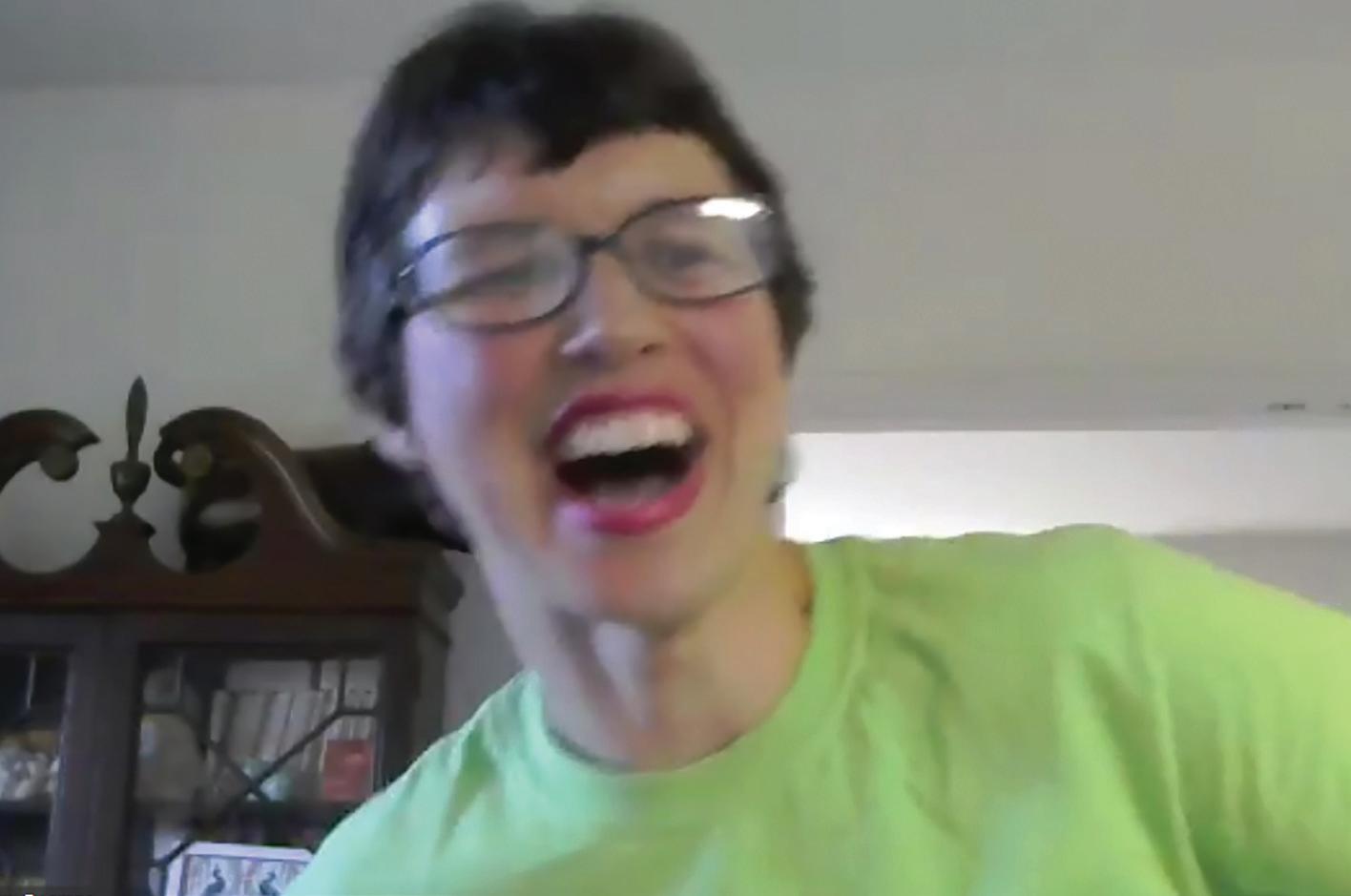
Cass said the most rewarding part of her work is its transformative effect.
“So there’s this connection with people that you don’t necessarily get to see and feel, the difference in people from before they walk in the room,” Cass said. “They move and they breathe, and they play and then create together. And when they leave, you can see the difference in their posture, they’re breathing deeply, their gaze has changed. This is profound.”
Cass said the most special thing about dance therapy is the relationship that can be built between people.
“You don’t need the language all the time,” Cass said. “The nonverbal connection, it cuts through so many of the defenses that you can become closer, deeper connected with people in a way that it’s just amazing. And that’s why you can work with people who are non verbal, people with Alzheimer’s or people who are on the spectrum. So the ability to connect and to elicit joy—it’s just incredible.”

Mental Health 13 To learn more about Let’s Dance It Out, email info@letsdanceitout.com For information on dance therapy, visit the American Dance Therapy Association website at www.adta.org.
(From left to right) Top: Elisa Jerugim, Mariana Dominguez and Robin Rosman
Bottom: Alyssa Zepeda Gonzalez, John Howe and Candis Morrison
Dancers and staff members demonstrate answers to questions about ways they interact with others through movements they create during a Let’s Dance It Out class over Zoom on Nov. 14, 2020. Screenshots by Peter Villafane.
Kicking down stereotypes
Pierce student doesn’t let diagnosis keep him from pursuing his passions
Story and photos by Benjamin Hanson
Autism.















Some consider it a lifetime obstacle.
David Tucker, Pierce student and defensive tackle for the football team, defies this stereotype. While he’s sometimes selective about who he interacts with because of his autism, he has discovered it motivates him to move forward.
“I don’t let being diagnosed with autism spectrum disorder deter me from doing the things that I love to do,” Tucker said. Tucker said autism doesn’t affect all the things he does. He juggles many disciplines: martial arts, music, ministry and man-to-man defense. But, other than God, hapkido is his main love and passion. Tucker is a second dan black belt and wants to open his own hapkido studio.
“I want to teach kids with autism and show them what hapkido can do for them like it did for me,” Tucker said.

“Best of the Best,” starring Eric Roberts and Phillip Rhee, sparked Tucker’s interest in all martial art forms.








He said hapkido brings him balance and composure and inspires him to do more for others.
Tucker was diagnosed with autism spectrum disorder at age six. He said he is motivated by his love for God and his ability to be resilient.
His autism diagnosis also doesn’t deter him from exploring his faith. He is a minister at Heavenly Vision Church in Los Angeles and is planning to become a pastor.








“God has always had a calling in my life,” Tucker said, “I’ve had many people speak that over me growing up. A minister on the autism spectrum? You don’t really hear about that often.”
Tucker said preaching his first sermon was a nerve-wracking moment because he stood at the same pulpit that his great-grandfather had for 50 years.

He said it helps him express his emotions and control his anger.
“I was tired of getting jumped and harassed by these gang members,” Tucker said. “I told my mom, ‘You have three choices: either I join these gangs, you buy me a gun or sign me up for hapkido classes.’”
The 1989 martial art film

“I was told I had big shoes to fill,” Tucker said. “My great grandfather had his own shoes. I’m still finding my own. It was a humbling experience. You have to go through a lot of studying, prayer research and writing down your own ideas.”
Although he filled his grandfather’s shoes, Tucker grew up not knowing his father.

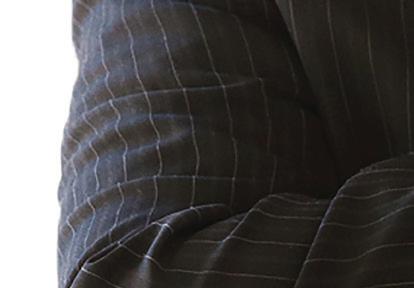
“It’s always been me, my mom and my three sisters,” Tucker said. “All of us would watch wrestling together and they would root for whoever The Rock was wrestling just to bust my chops.”
Lolita Himes knew something was different about her son when he was a child.
Tucker had a temperament problem and difficulty making eye contact when he would talk to her. It wasn’t until Tucker was in kindergarten that Himes received letters from the school psychologist recommending that he should be tested for autism spectrum disorder.
“When you’re a parent and something is wrong, you feel sad and worried,” Himes said. “I felt a lot of anxiety. A lot of tears were run. That time was difficult because a lot of the doctors weren’t putting him on the right medication.”
14 thebullmag.com
As a single mom, Himes looked for male role models for Tucker so he could learn how to be a man and process his emotions.
“God bless the different mentors that David could go and talk to about the things that me as a woman could not,” Himes said. “I’m very grateful for the male mentors that God put in our lives.”
Tucker was inspired to become a musician at 14 when he saw the movie “School of Rock,” starring Jack Black, but his mother didn’t have the money for a guitar until Christmas later that year. Himes thought he wanted an Xbox but was surprised to learn he dreamed of an electric guitar.
Tucker discovered a passion for music and eventually played in a band named Sons of Horus that he co-founded with Logan McGinnis. While he was chasing his dream of becoming a professional musician, he realized that it would take more than talent to make it big in a grimy industry.

He said it takes a few good looks, a whole lot of luck and band members who treat you like you deserve to be treated.
Tucker said he endured mistreatment from McGinnis for years until he left the band in July after McGinnis tried to convince him to steal trash and recyclables out of people’s homes.
He continues to enjoy playing his Fender Telecaster and Precision Bass but does not want to be a serious musician now because his focus has shifted to playing for Pierce’s football team.
Tucker sees the Brahma’s football program as a way to get into Azusa Pacific University, Baylor University or Oklahoma Baptist University to earn a bachelor’s degree, a master’s and eventually a doctorate in theology. He hopes to play more this season after redshirting in the fall of 2019.
Tucker said his hardest challenge is meeting people who don’t understand him or are quick to judge him because he behaves differently than others. He has learned not to care what other people think of him.
“I wish that non-autistic people would understand that autism doesn’t make a person any less than a person without autism,” Tucker said.
Mental Health 15
Left: David Tucker holds his hands in prayer at Topanga State Park in Topanga, Calif., on Nov. 11, 2020.
Right: David Tucker performs a jumping side kick at Point Dume Beach in Malibu, Calif., on Nov. 11, 2020.
Living a double life

The intersections of queerness, culture and Christianity
After a long night of dance practice for his cousin’s quinceanera, 12-year-old Kevin Perez came home late. His mother was angry—rightfully so, he thought.
But when he sat down for her lecture, she pulled out a notebook filled with love notes he had exchanged with his boyfriend. Then she pulled out a Bible.
His secret was out.
He lived a double life. At school, he was out and proud and accepted by his peers. But at home, he downplayed his queerness, afraid his family would reject him.
“Imagine being in a room and you’re always standing out,” Perez said. “You’re not accepted, yet you’re allowed to have your presence there. That really makes you feel used or disposable—like, ‘I could love you, but if you show that little bit of queerness or start acting out in front of us, we’re going to push you away.’”
Perez grew up in Sun Valley, California, with immigrant parents from Palencia and Saltan, Guatemala. While they didn’t go to church every Sunday, religion was still prevalent in their home.
“Religion is used as a fear factor and a tool to oppress and benefit cis and straight ideals, and used to put down or debunk queerness,” Perez said. “That’s where I realized that I was alone and not really surrounded by support or resources. Those experiences with family rejection, the little comments that you might hear and the bullying in school. It was really traumatizing.”
Monika Ramirez Wee, a former art professor at Pierce College and secondgeneration immigrant from Mexico, explained, “Being Catholic is this core integral part of who you are.”
According to Wee, the Catholic faith tells you to be straight, and to be anything outside of that is considered wrong in the religion.
“That makes you feel really terrible inside,” Wee said. “You’re essentially not a child of God, you don’t inherit the kingdom, you don’t get all the seven sacraments and all of those logistical things, but it’s like what it does to you inside as a person in terms of your sense of confidence.”
She recalled figuring out her sexual orientation at a young age. She decided to come out to her mother because she thought not telling her would be lying, which was also against the Catholic faith.
Her mother’s immediate response: “‘You need to go to confession,’ and ‘What have I done wrong as a parent,’” Wee said. “I folded under that type of parental rejection. It delivered a really strong message to me. It tells you, ‘I don’t have a family,’ my literal one, and everything that goes along with that. So the holidays, the parties, this senseof-self that goes with your identity goes away. And then if you’re also part of the larger, marginalized population in society, you really don’t have a family. That’s huge.”
Perez also experienced rejection. His mother’s reaction instilled fear and anxiety that stayed with him for more than seven years while he lived with his parents.

16 thebullmag.com
Story and photos by Katya Castillo
A religious cross hangs above Kevin Perez’s front door in Sun Valley, Calif., on Nov. 5, 2020.
Posters hang on Kevin Perez’s bedroom wall.

Mental Health 17
Kevin Perez sits in his bedroom.
“It feels like you’re living a double life,” Perez said. “Throughout that experience, I felt like I was going to get kicked out or put in the streets. I remember crying at the time thinking what alley I was going to go to just to sleep and figure it out in the morning, then trying to go to school and maybe tell them, knowing that some teachers were homophobic. It really felt like you were really alone. I remember trying to plan my survival.”
In high school, Perez learned about creating community and “chosen family” as he became active in a Gay Straight Alliance (GSA) club and formed LGBTQ-friendly cliques.

However, there were no nearby legitimate LGBTQ organizations he could turn to for support, the closest being in Hollywood.
During his time at Long Beach State and California State University, Northridge, Perez became more passionate about the social justice movement and wanted to make a difference in his hometown.
What started as a group of friends talking about creating community in the San Fernando Valley turned into Somos Familia Valle (SFV), which translates to “we are the valley family.” It’s a volunteer-run, nonprofit organization “led by trans queer people of color dedicated to support, empower, train, and mobilize trans and queer people, immigrants, our families, and allies for racial, gender, environmental, and economic justice,” according to the group’s mission statement.
In 2014, SFV organized what the organization believes is the first ever pride march in the San Fernando Valley. They expected 30-40 people, but were met with 150 people holding signs and ready to march.
“We’ve been such a need to the community because it’s something they’ve never seen before,” Perez said.
As president of SFV, Perez’s approach has been to “build community, listen to community and then build from that.”
18 thebullmag.com
Kevin Perez (left) stands with his cousin Geoffrey Vasquez, who’s a member of the Queer & Trans Men of Color group, at Balboa Park in Van Nuys, Calif., on Nov. 25, 2020.
“
SFV is not a safe space. We’re in a brave space.
Kevin Perez President of Somos Familia Valle
In the first few years, SFV organized monthly and bi-monthly meetings in parks and volunteers’ homes. They invited guest speakers such as sex workers and queer couples who were adopting kids.



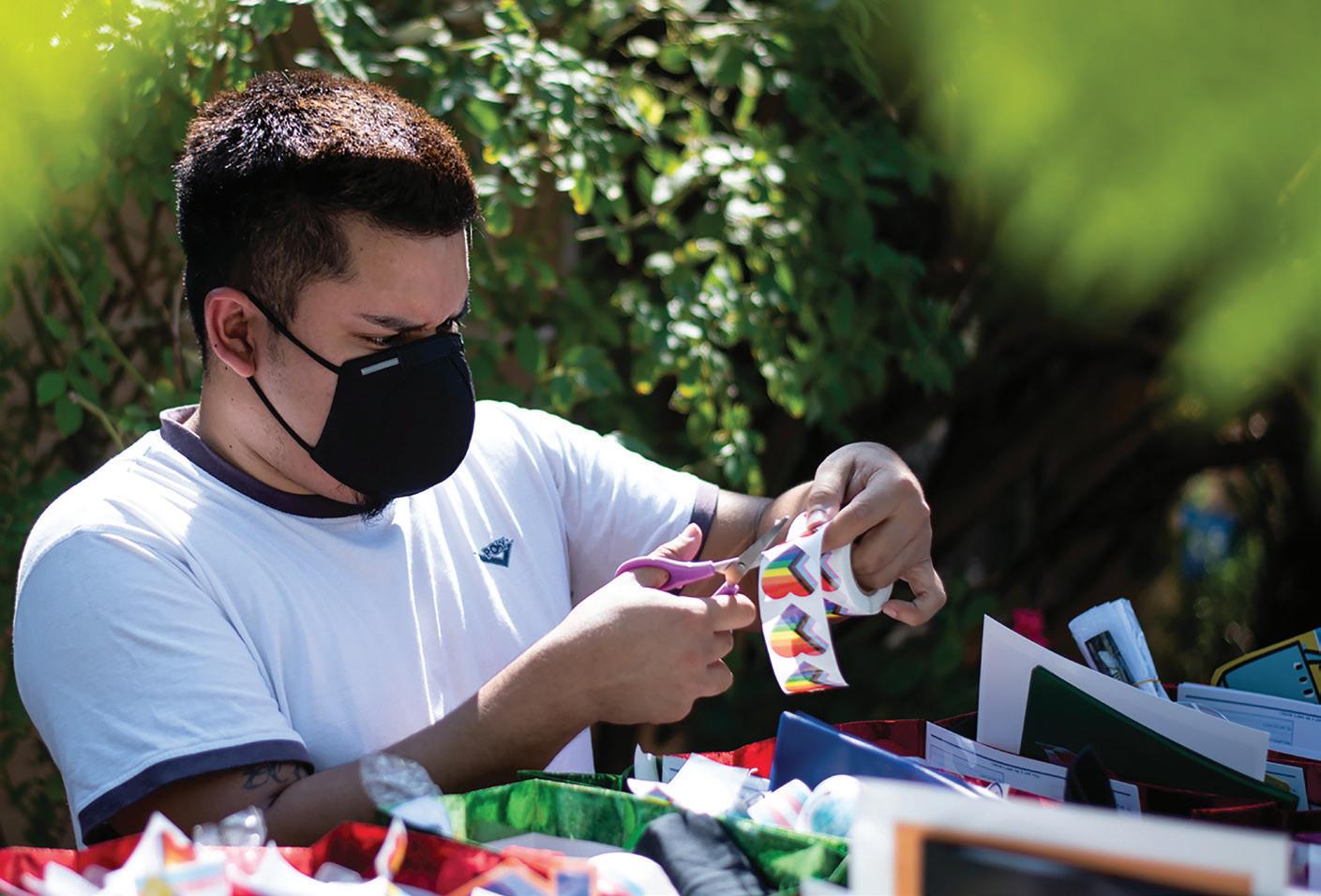
Since then, SFV created four distinct support groups: Queer & Trans Men of Color, Somos Women of Color, LGBTQ+ Youth Council and a parent support group that is not currently active.
One of Perez’s focuses is to build a community of self-empowered leaders. He said that LGBTQ+ people are a minority and it’s not always safe.
“I think when queer people get put in those situations, we also know how to thrive and how to learn to survive and really navigate the world,” Perez said. “They always told us in GSA that this is a safe space. [SFV] is not a safe space. We’re in a brave space. We’re leaders. We’re not victims. If we need something, we need to fight for it. We need to advocate and show up.”
Rodolfo Vazquez, a fifth-generation Chicano, joined SFV after seeing a Facebook post about it in 2017 and said he has benefited substantially from the Queer & Trans Men of Color support group.
“No matter what, there’s no judgement in who you are,” Vazquez said. “They embrace you. In one of the exercises that we do when we’re opening up, they say, ‘We got your back,’ and there’s a great power to that. It really helps boost your mood and your mental health. Just being among a group of your peers that you can identify with is so empowering and uplifting.”
Perez’s experience with familial rejection and lack of support inspired him to create a community for LGBTQ+ people of color in the San Fernando Valley so they didn’t feel alone.

“I didn’t have accepting parents, I didn’t have a school counselor that was there for me and I didn’t have an organization that taught me leadership,” Perez said. “I don’t want them to be victims of their oppression. I want them to be leaders. What I really want for any of our members is realizing you have your own agency, you have your own voice and your identities really do matter.”

It took several years for Perez and his mother to talk about his sexual orientation after that first night when he was 13. According to Perez, his work and advocacy broke the stereotype of what his mother expected and feared from a gay man.
“Now she’s my mom,” Perez said. “She’s loving, she’s caring and she’s there for me. We understand each other and we care for each other now. I think there was a little hate and some built up trauma I had. But now she’s very accepting.”
Since the pandemic, Perez decided to engage in SFV full-time. In his experience with the group, he saw the value of having a support system.
“I really want folks to be a little bit more vulnerable, especially because in our religious and Latino community toxic masculinity sticks,” Perez said. “But we could be proud and say, ‘yes I’m crazy but I can still advocate. Yes, I’m a victim but I can advocate and liberate myself.’ Just being vulnerable is really what I want for our members, and using that vulnerability to create change.”
Somos Familia Valle
A community organization led by low-income, fi rstgeneration LGBTQ+ people of color somosfamiliavalle.org

Queer & Trans
Men of Color
For ages 18 and older
Last Tuesday of every month
Women of Color
For ages 18 and older
Second Sunday of every month

LGBTQ+ Youth Council
For ages 12-17
First and third Saturday of every month
Mental Health 19
Kevin Perez cuts LGBTQ+ stickers into gift bags for SFV LGBTQ+ Youth Council in Sun Valley, Calif., on Oct. 7, 2020. The gift bags included artwork, stickers, voter registration packets, masks and pens. Most supplies were donated from various artists and organizations.
Kevin Perez (left) hands a gift bag to an SFV LGBTQ+ Youth Council member in Van Nuys Calif., on Oct. 7, 2020.
A stack of “Beyond the Gender Binary” sits in Kevin Perez’s front yard as he assembles care packages for SFV LGBTQ+ Youth Council members.
Therapy Resources
Inclusive Therapists
The website inclusivetherapists.com focuses on connecting marginalized people with mental health professionals. They advocate for culturally affirming care, equality and social justice. Users can sign up on their website to get matched with a therapist best suited to meet their needs.
BetterHelp
7 Cups
Users visiting 7cups.com can receive emotional support from trained volunteers with this free and anonymous service. In addition to one-on-one chat conversations, 7 Cups also offers self help guides and online therapy by monthly payment.
BetterHelp.com is a membership-based, virtual counseling platform where users can message, chat, call and video conference with licensed therapists. After getting matched with their counselor, clients can choose to remain anonymous during the counseling process.
Talkspace
With more than a million users, Talkspace. com is an online therapy service that offers 24/7 access. Users fill out an assessment and choose their therapist from a list of recommendations. Services include therapy, psychiatry, couples therapy and therapy for teens.
20 thebullmag.com
The pandemic panic
heightens anxiety for many
Water goes down the drain. This image, despite being a common, everyday visual, helps Lola Murphy deal with her anxiety.
Murphy, a 58-year-old entrepreneur from Calabasas, uses water as a metaphor to release her worries.
“I have this thing I tell myself when I let the water out of the drain that’s kind of like the Roto Rooter commercial,” Murphy said. “Troubles go down the drain. I say when this water goes out, then I’m going to be lighter—doesn’t mean my situation is going to be over, it just means I’m good. It’s not going to be as heavy as when I stepped into that water.”
Whether it is anxiety surrounding death, getting sick, losing income or loved ones, worries about COVID-19 have been stressful and nerve-wracking for many and may have exacerbated symptoms for those already struggling with anxiety.

Psychologist Carnetta Pryor works with patients who suffer from chronic anxiety and panic attacks. More than half of her clients suffer from anxiety.
“Because we’re all living in a very traumatic global experience, the uncertainty of it all and just the novelty of COVID-19 have really increased everyone’s anxiety,” Pryor said. “Some people were already kind of challenged with hypervigilance, or just worry and concern on a daily basis. COVID-19 has elevated that extremely.”
Murphy also uses mantras when she is at the beach. She tells herself that as the waves go in and out, so do her troubles. But she only pictures them going out instead of coming back in.
Murphy said she has always experienced anxiety but did not discover what it truly was until 2018, right before the marriage of her first child.
“I didn’t have a reference because I had never felt it before,” Murphy said. “Come to find out, I’ve always operated in anxiety. I just didn’t know what it was. So once it had a name to it, it made me nervous—even more nervous because I never had a name for it.”
Murphy has found that therapy significantly helps manage her anxiety. She also took up journaling as a coping mechanism. She said being able to talk to someone freely without fear of judgment helps her release her emotions.
Mental Health 21
Story by Paige Chestnut
Photo illustration by Katya Castillo
COVID-19
“I get a chance to spill my guts to someone that is completely neutral, that allows me to get it out,” Murphy said. “You know people say journal, or even if you journal, burn it, that sort of thing, which I’ve started to do as well. But I was the kind of person who said I never wanted to journal because I don’t want to have my thoughts down for my family to read later and scare the crap out of them, for whatever reason. And my journaling is really not scary.”
Anxiety disorders are the most common mental illness among adults in the United States, with more than 18% of the adult population affected, according to the Anxiety and Depression Association of America.
Understanding their disorder can help people cope, as anxiety attacks and panic attacks differ. Pryor said educating her clients on the differences between the two is an essential step.
“Panic attacks really elevate the involuntary mechanism in the body,” Pryor said. “You start breathing heavier, your heart beats really fast and your pulse is running and racing. It can feel like you’re having a heart attack.”
The main difference between the two is that panic attacks often occur without a trigger, while an anxiety attack occurs in response to a perceived threat or stressor.
Unlike panic attacks, anxiety attacks are not recognized in the DSM-V (the Diagnostic and Statistical Manual of Mental Disorders), but they are still widely acknowledged and used to describe intense or extended periods of anxiety.
Sandra Campbell, a 62-year-old housewife from Calabasas, said she first experienced anxiety at 19, when she had her first child.

“You have a little bit of anxiety about every situation that you don’t really know about,” Campbell said. “And you’re going into a new situation. You don’t know what to expect. So, I believe that was part of it.”
The COVID-19 outbreak has impacted Campbell’s anxiety, especially when she was diagnosed with the virus.
“Thank God I basically had two symptoms,” Campbell said. “My nose got clogged and I was extremely tired. But part of it was all of the other things I had heard and other symptoms that people had, I’ve known several people who didn’t make it. So the mental part of it I think was worse than the physical part for me.”
Campbell had COVID-19 for three weeks and experienced a lingering fatigue, but now feels as if she’s starting to recover completely.
Anxiety Statistics
Generalized Anxiety Disorder
• Affects 6.8 million adults (3.1% of the U.S. population), 43.2% of whom receive treatment
• Women are twice as likely to be affected as men
Panic Disorder
• Affects 6 million adults (2.7% of the U.S. population)
• Women are twice as likely to be affected as men
Her friends and family kept her calm throughout her diagnosis as well as her recovery. She has family members who work in the medical field, and she frequently met on Zoom with her women’s group for extra support.
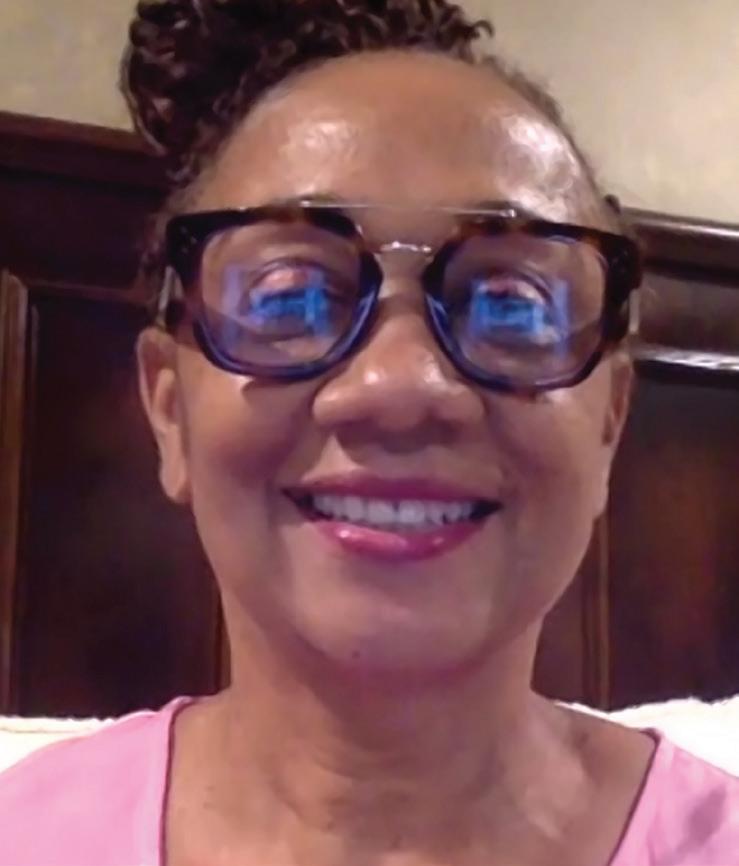
“I have three RNs [registered nurses] in my family,” Campbell said. “One works in the emergency room at a particular hospital, so she walked me through things and talked me through things. When I got overwhelmed with my emotions, she would let me know what to expect and just reassure me that if I hadn’t experienced certain symptoms, I probably would not. So it helped calm me down. It’s kind of tough to do it.”
Campbell says being able to talk through her problems with her women’s group has helped her cope in the best way possible.
“You’re able to discuss whatever you’re going through which is amazing because what happens is, when you don’t have anyone to talk to, you feel like you’re going through things alone,” Campbell said. “So when you talk to other women who can say, ‘Listen, I’ve been through that and I made it and let me tell you what I did,’ they’ll give you tips on how to work whatever you’re going through. It helps to have a place to go, a place to land.”
Social Anxiety Disorder
• Affects 15 million adults (6.8% of the U.S. population), 36% of whom experience symptoms for 10 or more years before seeking help
Source: Anxiety and Depression Association of America
22 thebullmag.com
“
I’ve always operated in anxiety.
I just didn’t know what it was.
Lola Murphy Entrepreneur
Sandra Campbell. Screenshot by Paige Chestnut.
Lola Murphy. Screenshot by Paige Chestnut.
Social distancing into the unknown
Isolation brings negative mental health effects
Waking up to a new reality, Jazlyn De La Cruz ponders her daily routine. Quiet, sad and feeling lonely, she watches her boyfriend leave for work.
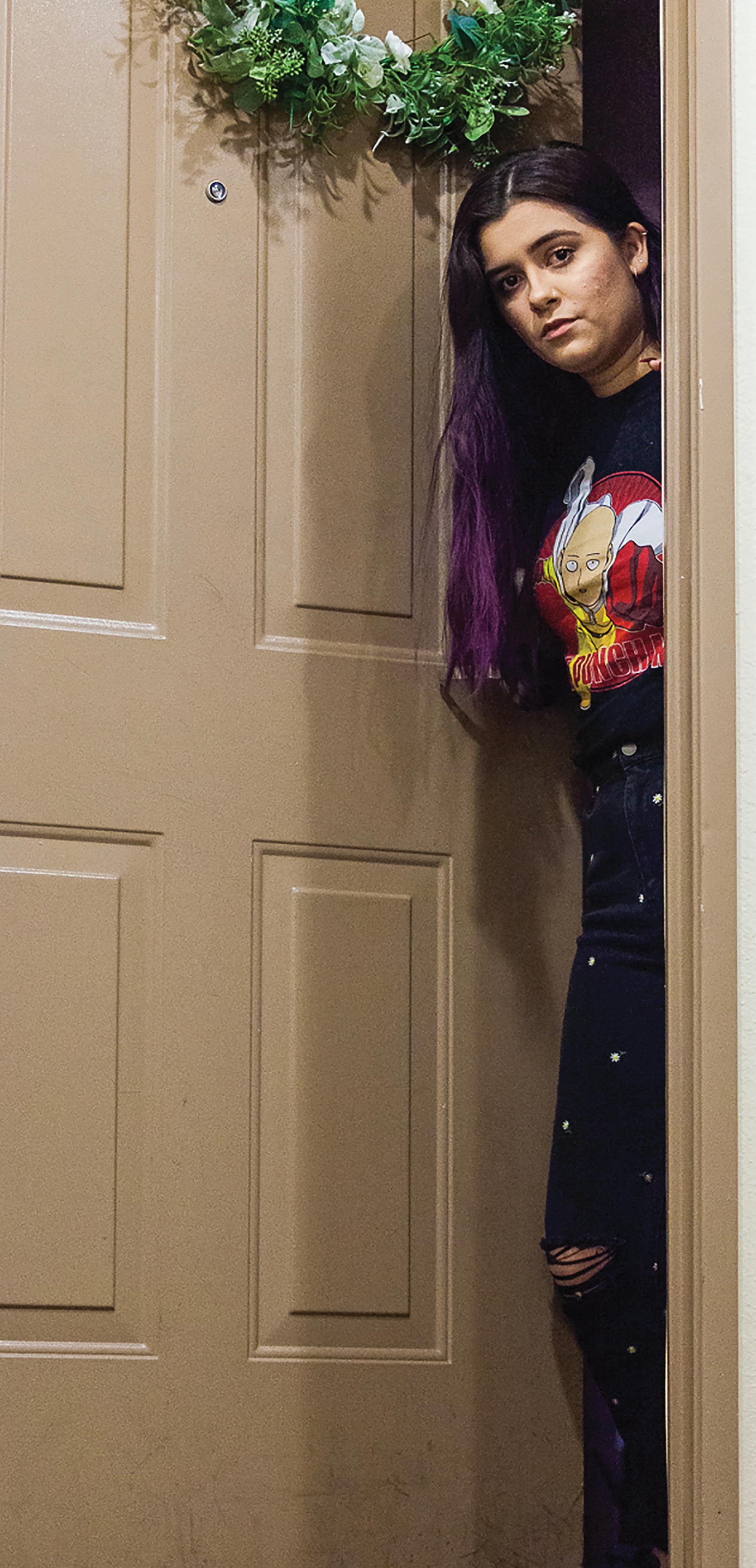
She lies in bed with only her thoughts and her cellphone to keep her company. She doesn’t feel like leaving her bed.
Only getting up to grab a bite to eat, she goes back into her cave. She tries to find anything to give herself some type of normalcy.
De La Cruz is not the only person who is in this rut. Isolation during the pandemic has negatively affected the mental health of many, who have found that the lack of social interaction has made them more depressed.
Loneliness, depression and anxiety have increased about 60% among people aged 18 to 35, according to United Press International.
“From the low interaction with family to having to keep track of my schoolwork, I feel as though I am losing my mind,” De La Cruz said. “If I did not live with my boyfriend, my mental health would have been even worse. He reminds me that I am only human and that everyone is going through different struggles even if they do not show it.”
She has found it challenging to be unable to visit her grandparents, who are higher at risk for Coronavirus.
Mental Health 23
Story by Elizabeth Dowell Photos by Benjamin Hanson
Jazlyn De La Cruz stands by her front door in Placentia, Calif., on Nov. 15, 2020.
“It is especially hard to try not to see my grandpa because he had just had a stroke and lives all the way in Utah,” De La Cruz said. “I have not seen him or my grandma since March. They miss me and I miss them, but I know as soon as I see them, I’d want to wrap them in my arms.”
The worry of passing on the virus and protecting herself and others has heightened De La Cruz’s anxiety.
“I would say the pandemic has made me feel anxious, but I wouldn’t go as far as to say that I am depressed,” De La Cruz said. “It makes me anxious when I go out because I work with
the public. I constantly think that my boss will judge me if they hear I went to a get together because I see so many people every day that if I am asymptomatic, I could be passing along the virus to customers or the people I am hanging out with.”
A student at California State University Fullerton, De La Cruz has struggled with the transition to virtual learning.
“I have never been the best at online classes,” De La Cruz said. “There are so many distractions and resources, I feel as though I do not need to learn the material..”
As a psychology student, De La Cruz has learned that people love the approval of others and do not thrive being alone, so she makes herself available to those around her.
“I let it be known that I am a shoulder to cry on and an ear that will listen,” De La Cruz said. “No one is ever truly alone in this world, and letting people in helps not only myself, but the people who I talk to as well.”
Virtual communication has allowed De La Cruz to connect with others more often than before the quarantine.
“I now make an effort to check up on people or speak my opinion, especially when it is a positive one,” De La Cruz said. “I have always had challenges having close friendships. I have many friends, but not the type of friends that I can call to hang out with me.”
Many people have turned to therapy to cope with their emotions and mental health struggles. Therapist Lily Suzuki, whose therapy sessions are now mostly virtual, has witnessed how the pandemic has affected her patients.
“I have been seeing about the same amount of patients since the pandemic, but there are more referrals than I can handle,” Suzuki said. “Patients have more depression and anxiety in general. Relationship issues are more intense. There is more isolation, weight gain, problems sleeping and fears about the future. Certainly those are affected by job loss. There is a little more substance abuse going on.”
Virtual sessions have been tough for Suzuki and the change has affected her health.
“I do have more headaches and fatigue when I do video therapy, and it’s more challenging looking at a screen than enjoying an office together and seeing body language cues,” Suzuki said.
Sierra Ramirez, a student at University of California, San Diego, is struggling to cope with her mental health during the pandemic.

“I seem to feel very disconnected to the reality of the world, almost like a coping mechanism,” Ramirez said. “This pandemic has been overwhelming and the unknown outcome has increased my anxiety which has led me to be more depressed.”
Ramirez enjoys being around people but has had to limit her social activities.
“Social distancing has definitely been a challenge for myself,” Ramirez said. “I tend to be a talkative person so not having those social interactions leave me feeling hopeless at times. Personally, I would consider myself to be both an introvert and extrovert so social distancing has been overwhelming at times when I need those social interactions.”
24 thebullmag.com
Sean Raus and Jazlyn De La Cruz stand in the street by their apartment in Placentia, Calif., on Nov. 15, 2020.
The pandemic has placed a heavy burden on Ramirez’s mental health and has made her feel more depressed and anxious.
“A lot of times I think of the worst situation: I’ll get COVID and be very sick or all of my family will get it and get very sick,” Ramirez said.
Ramirez has also been struggling to keep up with her classes, and Zoom classes have become more of a chore than enjoyment.
“Virtual learning has not helped with my mental health as well,” Ramirez said. “I would prefer to be in person classes. I feel as if I’m not getting my full college experience.”
To improve her mental state, Ramirez has turned to keeping up with friends and cooking for her parents on her days off.
She said she can’t go without having social interactions and having these activities have helped her.
“Distracting my mind and focusing on myself are my coping mechanisms,” Ramirez said.
One organization helping people cope with their mental health issues is the National Alliance on Mental Illness (NAMI), which has thousands of locations throughout the country.
The organization’s mission is to provide knowledge and assistance to the community, according to Kim Burnell, president of NAMI’s San Fernando Valley division.
They are made up of all volunteers who are struggling or have struggled with mental illnesses, and they provide free education classes for their clients’ family and friends through their outreach program.
“Classes focus on communication skills, coping and managing techniques,” Burnell said. “We also offer a HelpLine for the community to call to gain resources, and we direct people to the proper treatment areas.”
Burnell said although it is harder to provide services online, the organization has seen an increase with the community reaching out for help.
“The pandemic has made it challenging, as people are more isolated,” Burnell said. “Everything is virtual help now. Our HelpLine has risen in numbers since the pandemic began.”
NAMI seeks to help people with mental illnesses live healthy lives and get the support they need.
“We offer hope and save lives,” Burnell said. “People think their life is over.”
While holding onto hope can be challenging during the pandemic, some have learned that it can be found from within.
De La Cruz said people should do things that make them happy.
“Even if you are feeling down, it is temporary,” De La Cruz said. “No one is able to control your emotions other than yourself. You are a unique individual that was put onto this Earth for a reason.”
Mental Health 25
Fernando Valley Resources
Jazlyn De La Cruz Student Pierce College Mental Health Counseling (818) 710-4270 Mon-Thu 8 a.m.-6 p.m. Fri 8 a.m.-4 p.m. www.piercecollege.edu/offices/ health_center NAMI San Fernando Valley HelpLine: (818) 994-6747 info@namisanfernandovalley.org 20151 Nordhoff St., Chatsworth, Calif., 91311 www.namisfv.org
San
“
No one is ever truly alone in this world, and letting people in helps not only myself, but the people who I talk to as well.
Helping others help themselves
Addiction Studies program students lead others toward a better life
Story and photos by Kamryn Bouyett
Most students struggle at one point or another in their college years. Some may not have experienced mental health issues until they got to college, but many already have.
Students at Pierce College’s Addiction Studies program are learning to understand and treat individuals with co-occurring disorders, which are substance abuse or addiction combined with mental health disorders.
Most students who enter the program come with trauma, according to addiction studies professor Judy Farash, who addresses their experiences in specific classes.
“Growing up, a lot of them have come from foster care,” Farash said. “A lot of them have done prison time. So, they’re really just rebuilding.”
As classes continue to dig deeper into certain sensitive topics, students can get retriggered or even relapse.
“We’re talking about child abuse,” Farash said. We’re talking about molestation, sexual addiction. We get into some transgender issues. We get into a lot of very detailed things.”
Addiction Studies is a clinical psychology program where students can graduate with a certification as an addiction studies counselor or an associate degree.
Originally, the Addiction Studies program was located at Los Angeles Mission College, but the program has been around for about 20 years. Farash was in the program in 1998.
Alumnus of the program Kevin McGahey talked in a Zoom interview about his specialized job as a counselor for the homeless.
Before becoming a counselor, McGahey worked in development for television and film for eight years and was chief of staff at a tech company for two years. But he said his work now is more rewarding.
“What I’m doing right now is quickly becoming the best job I’ve ever had in my life,” McGahey said.
When working with his clients, McGahey talked about the weight it has on him. As much as he tries to help his clients while they deal with their addiction, he tries not to blame himself if they continue to struggle with it.

“I am not responsible for the change in the world,” he said.
McGahey said the program taught him that the most effective way to take care of his clients is to take care of himself first and separate his home life and work life.
“The more we ruminate on it, the more we kind of make it about ourselves too,” McGahey said. “And that’s something we want to not be in the habit of. That’s what I try to do every day. And sometimes it’s easy, sometimes it’s not.”
McGahey said the difference between a therapist or counselor and a doctor is that a counselor must validate the feelings of their client. It’s their job to come up with ways to help clients cope with their addictions.
The difference between doctors and therapists, according to Farash, is that medical doctors look for a physical issue while therapists look for the emotional issue.
“We’re looking at more of the root cause and how it’s affecting you today,” Farash said. “Not just in the moment, but your environment that you’re in socially, emotionally.”
Farash said she is able to have rich conversations during her Zoom classes, especially during these times of racial tension. Most of her students are affected by the current divide and have different views compared to their family members.
Carlos Velasquez is a 2016 alumnus of the Addiction Studies program. After finishing, he went to California State University, Northridge and graduated with a bachelor’s degree in psychology while working at Tarzana Treatment Centers.
26 thebullmag.com
Carlos Velasquez, an alumnus of the Addiction Studies program and student of California State University, Northridge’s credential program, posing in Woodland Hills, Calif., on Nov. 3, 2020.
Now, he’s a tutor and a student of the credential program at CSUN preparing to become a teacher and counselor.

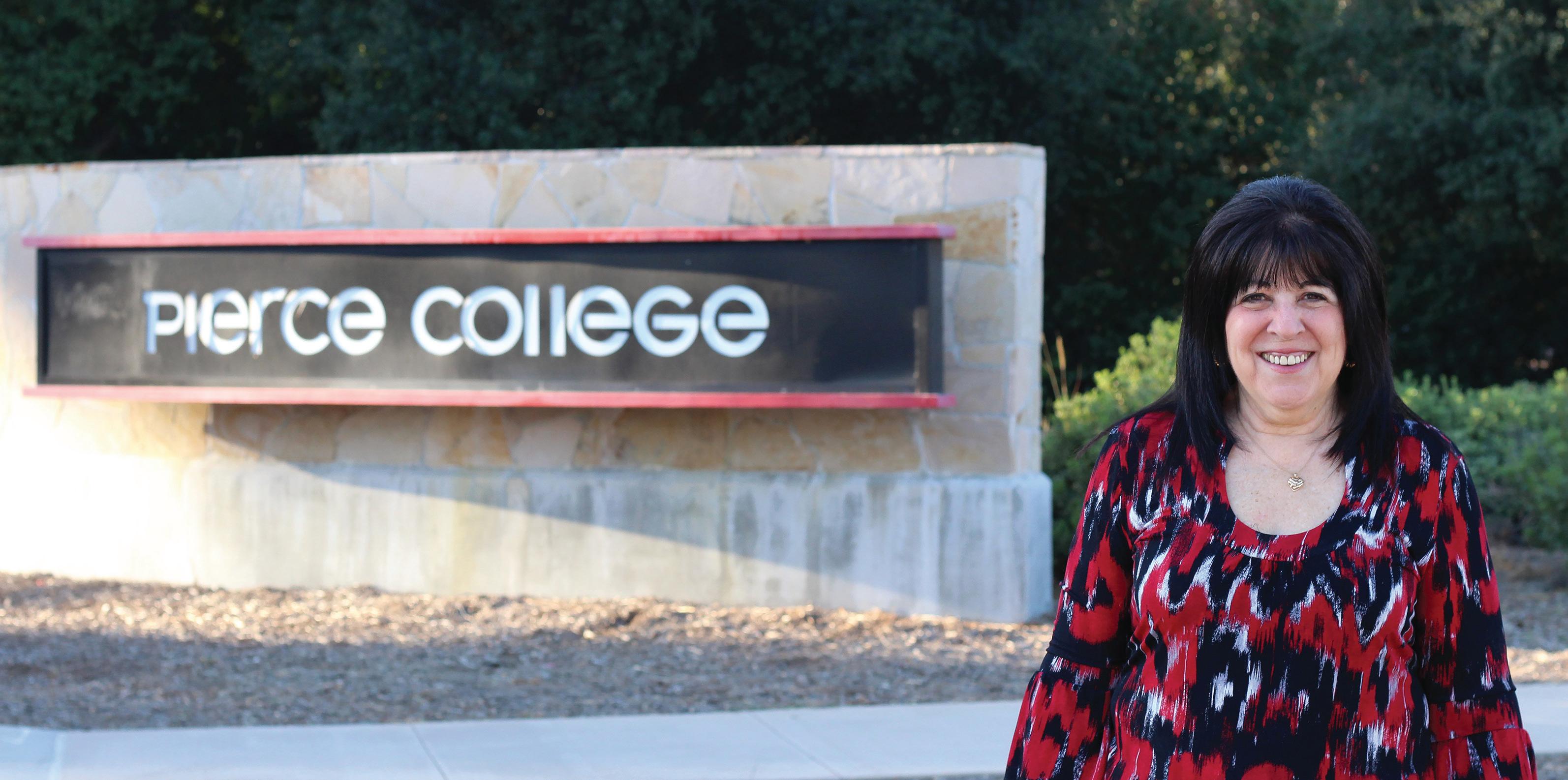
Velasquez would occasionally come back to Pierce to attend classes he’s taken in the past to make sure he was an expert in the subject. He said the classes are not the same as Pierce classes outside the program.
“The whole program itself is geared towards being an experiential program, which is about experiencing what counseling is not just from a counselor perspective, but from a patient perspective,” Velasquez said. “You do a lot of role plays in classrooms where you are the counselor and the patient. And the biggest learning you get from the program is things you see about yourself by going through that process.”
Addiction Studies Courses
Understanding Addiction and Counseling
Physiology and Pharmacology of Psychoactive Drugs
Clinical Counseling Laws and Ethics
Group Skills for Addiction Counselors
Addiction Treatment and Recovery
Field Work & Advanced Field Work Practicum
Addiction and the Family
Addictive Diseases and Life Style Disorders
Continuing Recovery
Velasquez said the subjects taught in the Addiction Studies program also help with understanding human development and allow him to learn more about his future career as a counselor.
“I think there’s a core psychology element to all things because everything that has to do with people’s behavior and psychology is the science of behavior,” Velasquez said. “I think these studies don’t only teach you about addiction. It also teaches you about human behavior.”
Strategies and Basic Skills
Drinking Driver Program Personnel Training
Addiction and Theories of Human Development
Sociological Aspects of Addiction
Women and Addiction
Addiction and Eating Disorders
Domestic Violence Counselor Training
Batterers’ Intervention Facilitator Training
Clinical Counseling for Co-Occurring Disorders
Mental Health 27
Judy Farash, a former addiction studies professor, stands in front of Pierce College on Winnetka Avenue in Woodland Hills, Calif., on Oct. 15, 2020.
Addiction Studies program director and associate psychology professor Allen Glass on Nov. 25, 2020.

28 thebullmag.com
Robbie Silos, 5, plays a mobile game on his smartphone at home in Mission Hills, Calif., on Nov. 18, 2020.
Lost in the virtual world
“Robbie! Robbie! Robbie! Robbie!” “ROBBIE!”
After the fifth call, mother of two Cheska Silos finally gets the attention of her 5-yearold son.
He was distracted playing video games— eyes glued to the screen, tiny fingers clutching his smartphone or tablet. He sometimes does this for hours.
“He gets really focused on it and when you call him he doesn’t respond,” Silos said.
Although Robbie also does outdoor activities, such as shooting Nerf guns with his cousins, he is allowed to be on his phone for up to four hours, playing video games or watching Youtube.
Aside from his phone or tablet, Robbie also plays computer games. He plays Plants vs. Zombies, Fortnite, Call of Duty and Roblox, which he plays the most.
In the 1960s, psychologist Albert Bandura conducted the Bobo doll experiment, seeing how 72 children, ages three to six, reacted to witnessing violent behavior.
Adults performed aggressive acts toward a toy called the “Bobo doll” to one-third of the children. Another third were shown neutral acts toward the doll, and the last third was the control group. The researchers then observed what the children did to the doll after what they saw.
Those who were shown the aggressive acts tended to imitate what they saw. Bandura concluded that this supported his social learning theory. The children learned aggression by watching it from others.
According to Brandon Shindo, a licensed clinical social worker and psychotherapist, video games may have a high impact on players’ behavior.
Shindo explained that when some children play video games something in their brain triggers them to want to win all the time and when they lose they act out in aggressive and violent ways.
“Sometimes when you are playing video games, you get pretty tense,” Shindo said. “If you are trying to run away from somebody or trying to shoot somebody, these kinds of things can activate certain behaviors inside of you, so it’s a combination of real nature and nurtures together.”
Shindo said video games can also be used as a coping mechanism.
“If youth are really stressed out, it can be a healthy way of taking a break, whether it’s school or work,” Shindo said. “It can shift them to something else.”
While video games can be a healthy distraction, Shindo said players should not overdo it.
“Anything in terms of video games where there is excess, it becomes an issue,” Shindo said. “When it’s done in moderation, it can be used in a positive way.”
David Greenfield, founder of The Center for Internet and Technology Addiction and assistant clinical professor of psychiatry, said in an article in Brain & Life Magazine that taking a video game away from an “addicted adolescent” can lead to behavioral problems, withdrawal symptoms and even aggression.
Silos found that these effects were true for her son.
“We did delete some of his games, but he acted irritated and he threw a tantrum,” Silos said. “But we made him understand.”
Some enticing factors in modern computer games are earning items such as skins, costumes, upgrades and new characters. Players can get these items from playing multiple levels or by purchasing them.
For younger players such as Robbie, they may be able to purchase them through money from their family.
“My aunt would give him money, my sister would give him money for Fortnite skins,” Silos said. “I did give him some V-bucks, so he spent $200 already—a lot of bribing. His grandma just gave him $50 of V-bucks for the whole week if he didn’t fight with his brother, so she gave him $50 and I think I gave him another 50 for a reward.”
Shindo believes that young people should have someone to talk to without feeling judged or made to feel bad.
According to research done by Sibylle Georgianna, a clinical psychologist, video games can be addictive.
“The human brain is wired to crave instant gratification, fast pace and unpredictability,” Georgianna wrote in an email. “All three are satisfied in video games.”
Silos noticed that video games can become an obsession.
“I think they are really addicting because they get really into it,” Silos said. “I mean, I get addicted to it. Imagine a 5-year-old. Of course he is going to get addicted to it, too.”
With many children staying home during the pandemic, they may be spending more time on screens and on video games.
“I think there is that stigma of mental health services and so maybe it’s not actually going to therapy but having people that young youth can go to and confide in if it’s a mentor or somebody at a church or a religious institute or even a teacher,” Shindo said.
Shindo said that as a society there needs to be a focus on monitoring young people in terms of when things happen in their lives, they feel comfortable to confide in someone.
“If it’s all kept inside and repressed, it’s going to come out one form or another oftentimes. Those types of stigmas need to change in society as a whole and I think teachers, professors and professionals on that level need to advocate this start to change,” Shindo said.
“
I get addicted to it. Imagine a 5-year-old. Of course he is going to get addicted to it, too.
Cheska Silos Mother
How video game addiction affects young people
Mental Health 29
Story by Joey Farriola Photo by Peter Villafane
Long nights, tired days

Sleep disorders affecting the mind
Story by Luis Mendoza
Photo illustration by Katya Castillo
Most people have struggled with getting a good night’s sleep. People toss and turn in bed before finally getting rest.
But what if that rest never comes?
When discussing mental health, sleep doesn’t always get mentioned, but it is vital for one’s well-being. Some may even treat it more as a luxury than a necessity, unaware of sleep disorders or the full impact of sleep deprivation.
A study done by The United States National Library of Medicine National Institutes of Health found that 60% of all college students suffer from poor quality of sleep and 7.7% meet the criteria for insomnia.
Low amounts of sleep have been found to be in direct correlation with lower grades and test scores. Studying all night for finals could do more harm than studying for the night and going to sleep.
Pierce student, freelance photographer and hairstylist Vanessa Rivero said insomnia affects her both mentally and physically.
“At my worst, I’m extremely irritable,” Rivero said. “I’m kind of forgetful and angry. Because I have a lot of life within me, a lot I want to do and a lot of a lot of things I want to. I’m a generally happy, energetic person. But when I’ve had a night of insomnia, the next day, I’m just fully suffering. It’s almost like you go to bed and you wake up sick. Not physically, like I’m ill, I’m vomiting. But there’s that mental sick where you’re incapacitated to a to a point because I don’t have my full zest of life.”
Rivero thinks that the best way to help friends or family with insomnia is by being there and simply being there for them and having their feelings justified.
“Listen to your friend with insomnia,” Rivero said. “Don’t try to be their doctor. That’s a big one. You know, everyone wants to be your doctor and everyone wants to fix you. But you’ve heard it all.”
30 thebullmag.com
According to health.org, sleep-related problems affect 50 to 70 million Americans.

Mental Health 31
Guillermo Castillo, who also has insomnia, said those who have it should not feel like victims.
“Have a very peaceful life, very relaxed,” Castillo said. “That’s what I try to do with my insomnia. Be calm, relaxed and peaceful. I never felt like a victim of anything. I’ve never felt that this is a disadvantage.”
Another major sleep disorder is sleep apnea, a condition that blocks airflow to a person’s lungs while they are asleep. Their breathing starts and stops suddenly, preventing them from getting a restful night’s sleep.
Business owner Benjamin Villafane has struggled with sleep apnea for multiple years. He said his condition made him more than just tired. It also affected his brain functions.
“You’re sluggish,” Villafane said. “You’re always sleepy. It eventually affects your memory, your loss of memory is also affected, the loss of focus. It’s pretty much the strain from not having the breathing, getting enough oxygen and for the brain to recover enough time at night.”
A person suffering from sleep apnea often wakes up extremely sleep deprived despite getting a full night’s sleep.
People with sleep apnea need help to properly breathe during sleep. They can get help with a device called a CPAP (Continuous Positive Airway Pressure) machine, a mask that goes over a person’s face while they are asleep to keep their airways open during the night. The mask is attached to a machine that pumps air into the person to keep their airflow at a constant rate. This helps them stay asleep to get their brain the rest it needs.
Villafane said it was difficult to start using a CPAP machine, but he eventually found that the benefits are worth it.
“The hardest part is the adjustment part because you’re not used to having something on your face while you’re asleep,” Villafane said. “But once you get used to it, you’ll be looking for it because it gives you a good amount of rest and when you wake up, you’re energized and you’re refreshed.”
Sleep gives the mind time to heal and rest to make a person ready for the next day and keep cognitive thinking strong.
Mental illnesses such as anxiety, ADHD, depression and bipolar disorder can be triggered by not getting enough sleep.
Psychology professor Angela Belden said that getting a healthy amount of sleep is vital to be in a healthier state of mind.
“Sleep deprivation can wreak havoc on us,” Belden said. “Adequate sleep is essential for forming new memories, for learning things. It’s essential for emotional regulation. And when we are sleep deprived, even one night of sleep deprivation can cause us to have a slower reaction time. It can cause us more emotional volatility.”
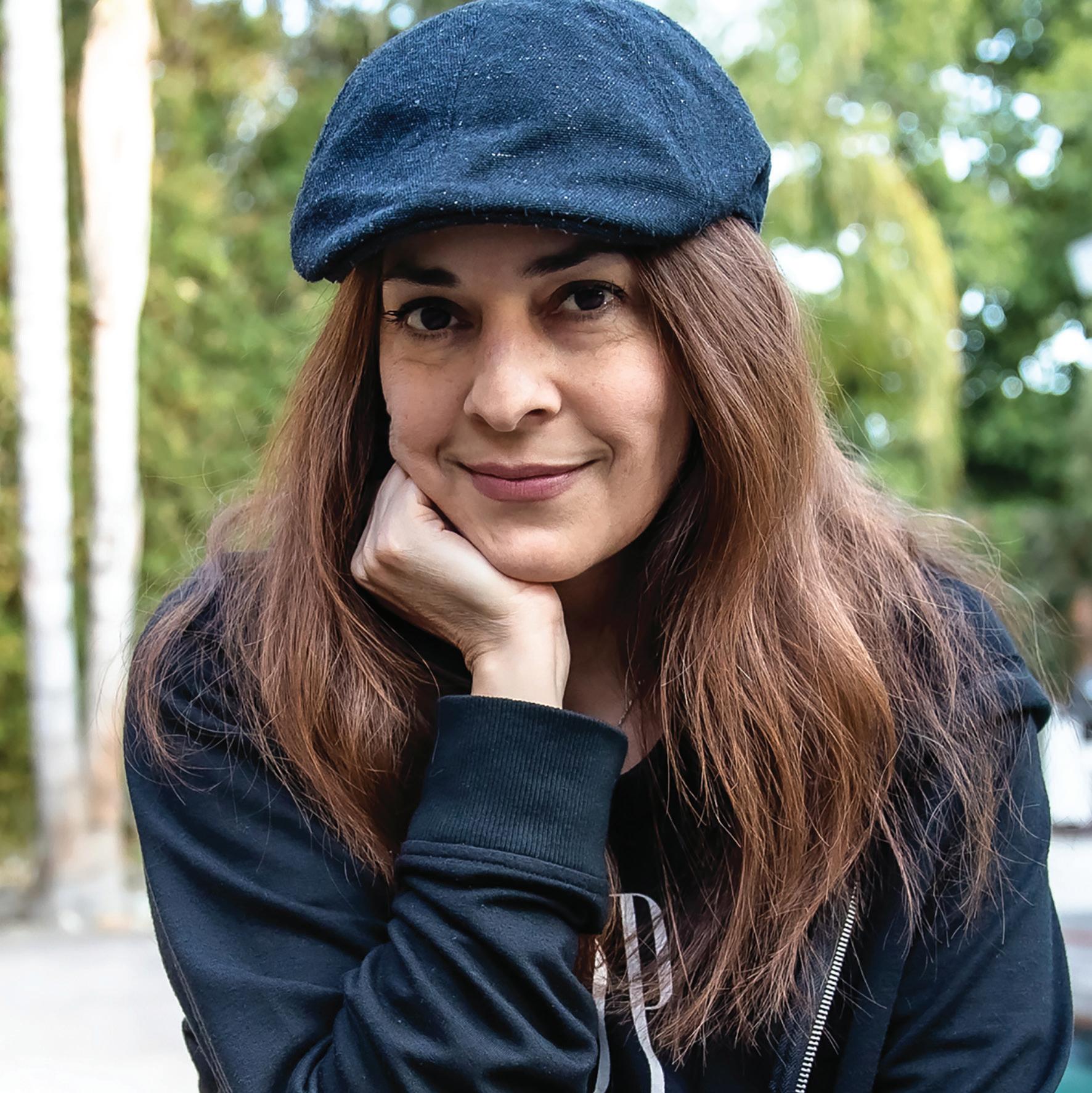
A helpful step in getting a better night’s sleep is having proper sleep hygiene. Going to bed and waking up at the same time every day can so the body can get accustomed to when it should sleep and for how long, limiting caffeine intake, especially after 2 p.m, and limiting screen time with electronics to give the eyes rest before going to sleep all help overall health.
Psychology professor Janine Elias said people should also practice giving themselves positive reinforcement before bed.
“Do a gratitude exercise where, before they go to sleep, say something that they’re grateful for,” Elias said. “And that gratitude doesn’t have to be immense. They could congratulate themselves that they drink their water that day. It makes a huge difference. It’s the little things in life that make all the difference.”
32 thebullmag.com
Pierce student, photographer and hairstylist Vanessa Rivero sits outside her home. Photo by Vanessa Rivero.
“
Listen to your friend with insomnia. Don’t try to be their doctor. Vanessa Rivero Freelance Photographer
Remembering Bob Scheibel
Longtime Bull Magazine adviser dies
Story by Peter Villafane
“See me after class,” the words no student ever wants to hear, ended up changing the course of one student’s life.
Professor Robert “Bob” Scheibel pulled his glasses down to his nose and told his student Karen Kingsbury to never stop writing.
Kingsbury, who is now a New York Times bestselling author with 25 million books sold, said this was a defining moment for her and that there was no arguing with Scheibel.
“It felt like everything became sort of slow motion, and the words came, more than just his words, it was almost like they resonated through me,” Kingsbury said. “No one else had said that to me. You almost feel like you were on holy ground because you can almost hear angels singing in the sky or something, like there was this moment that was carved out from time. And those were the exact words I needed to hear.”
Scheibel died on Oct. 27 at age 94 at his home in Woodland Hills. He taught journalism at Pierce from 1969 to 1989 and spearheaded the success of the Media Arts department. At the department’s awards banquet, the Scheibel Award is given to the most outstanding student on the magazine staff.
Mike Cornner, professor emeritus of journalism and a former chair of Pierce’s Media Arts department, said Scheibel made the department successful by putting together a good team of people. He and Scheibel would teach many classes as a team, consistently playing off of each other.
“We didn’t always agree on everything, but we always talked things out,” Cornner said. “And so I learned more about journalism and more about teaching journalism from Bob than I’m sure I ever learned in college.”
Cornner said Scheibel had a brilliant mind and always had a positive attitude.
“When I think of Bob, I smile,” Cornner said. “He had just a magnetic kind of personality and students cared a great deal for him.”
Cornner and Scheibel started doing “hell sheet” at The Roundup. Once a week, on the day the paper came out, they would go through the paper and discuss every problem they found in it. This process has remained a Roundup institution to this day.
“It was personal, and we even had an administrator on the campus who had been a coach of a football team at West L.A. College,” Cornner said. “He sat in on some of the hell sheets and said, ‘I don’t know how you guys do this. I’ve never talked that mean to my players before.’ And we of course weren’t being mean, we were being instructive and we were trying to be accurate about what we saw, areas where people could improve.”
Kingsbury said that while many of her peers “lived in fear” of hell sheet day, she loved it.
“He demanded excellence from me, and so he got it,” Kingsbury said. “And that is still shaping my writing today. On an off moment— not during hell sheeting—there was nothing better than Bob Scheibel’s smile, and to know that you had hit that mark and he was proud of you.”
She described Scheibel as the perfect mentor who could be surly but provided grace.
“He could be gruff and serious and push you to be excellent but then celebrate like nobody else when you experienced the victory,” Kingsbury said. “As gruff as he could be, he treated you like a son or a daughter once you were a part of his world.”
According to Kingsbury, journalists today are nothing like Scheibel.
“Bob was a purist,” Kingsbury said. “He was an old school journalist that believed the facts are so critically important and that your opinion did not belong in that story. He was the old school journalist that we’ve lost. We don’t have those today.”
Cornner said Scheibel had a lot of guts and would put his job on the line to defend students’ free press rights.
One instance was during the 1970s, when streaking—running through a public place naked—was popular. There was a streaking event on campus, and the editor-in-chief of The Roundup at the time wanted to run frontal images of the nude streakers.
The Pierce president demanded to see Scheibel in his office, but Scheibel said he would only come if he could bring the editor-in-chief with him. He defended the student’s decision to the president, and the two eventually just agreed to disagree.
“And that was the end of it,” Cornner said. “There were no further repercussions. But there was a lot of fear at the time that there could be repercussions and he couldn’t do anything to the students but he certainly could punish the faculty.”
Scheibel was also in the Navy in 1944. His wife Barbara said he would frequently talk about his experiences, including one time when his ship was struck by a Kamikaze plane during the Battle of Okinawa.
Before coming to Pierce, Scheibel taught at Canoga Park High School. According to Barbara Scheibel, he stayed in touch with many of his students and even saved letters from students dating back to 1961.

“He always tried not to hurt students,” Barbara Scheibel said. “Whenever it was said, it was kind of always in a joking fashion. He loved the students. He really enjoyed being with them.”
Barbara Scheibel described her husband as a hard worker and a terrific father who loved his family. She said her favorite thing about him was his sense of humor and zest for adventure.
“The kids just adore him,” Barbara Scheibel said. “I mean, the fact that we took them camping for almost a year and that we all got along fine tells you something.”
This camping trip was in 1963, when the children were at ages 4, 10 and 11. Barbara and Bob were on sabbatical from teaching at Canoga Park High School. They ordered a camper in England and took the family around all of western Europe.
“That was probably the most wonderful experience of all our lives,” Barbara Scheibel said.
Barbara Scheibel said Bob loved to tell jokes, which were good “most of the time.”
“He just enjoyed people, period,” Barbara Scheibel said.
Survivors include his wife Barbara, their three children Dean, Ian and K.C. and grandson Dylan.
Mental Health 33
Photo courtesy of the Scheibel family
crazy call me
When I was 17, I sat in the doctor’s office, shaking. My voice was small, and my heart was moving so fast it felt like it was vibrating.
“Am I crazy?” I asked the doctor.
I had just been prescribed antidepressants, and I could no longer ignore that something was wrong. That day, I began to put my mental health first. That choice saved my life.
My mind used to be an unsafe place. The symptoms of my mental illnesses have been debilitating, but thanks to therapy, medication and mindfulness, I have been able to stay strong and find pockets of joy wherever I can.

That’s why making this issue of The Bull all about mental health was so important to me.
If you are struggling with mental health problems, I hope this issue has brought you some comfort in knowing you are not alone. I want the stories to shed light on the human experience and help destigmatize conversations about mental health. There is no shame in reaching out for help if you need it and using the resources in these pages.
It gets better. This is a cliche, but for good reason. It really is true. It got better for me, and it will for you, too.
Peter Villafane, Editor-in-Chief
34 thebullmag.com LETTER FROM THE EDITOR
Photo by My Pham


THEBULLMAG.COM
Front and back cover photos by Jose Samour
Model: Mars Stober




















 Elizabeth Dowell Reporter
Paige Chestnut Reporter
Jeff Favre Adviser
Jill Connelly Adviser
Luis Mendoza Reporter
Ariel Gil Reporter
Elizabeth Dowell Reporter
Paige Chestnut Reporter
Jeff Favre Adviser
Jill Connelly Adviser
Luis Mendoza Reporter
Ariel Gil Reporter













































































